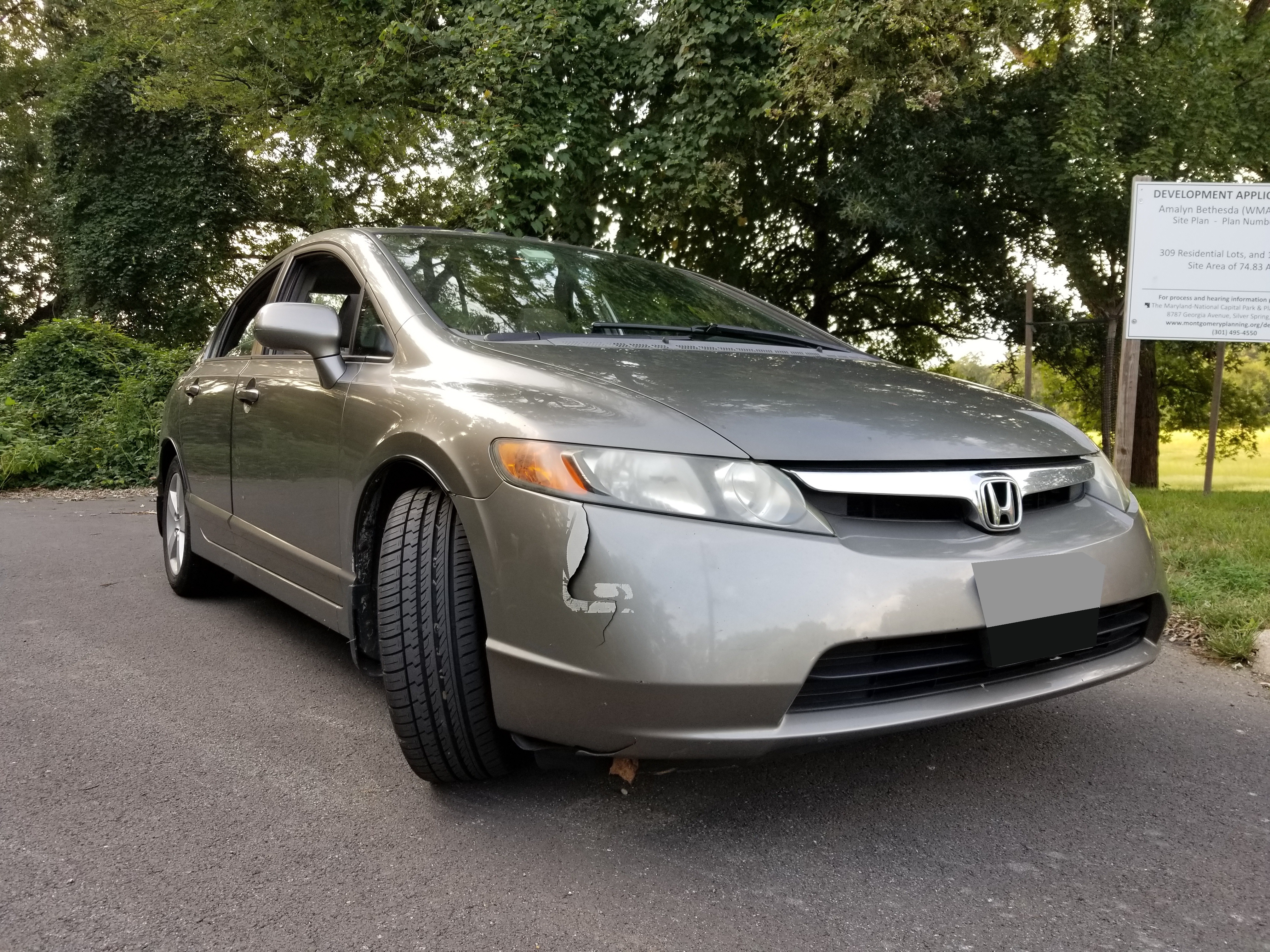
In no small part due to the coronavirus pandemic, I have had little access to review cars as of late. Please excuse the hiatus. It should also be mentioned, in the interest of academic integrity, that this 2006 Civic sedan is my daily driver. As such, I both have exposure to its performance and behavior, as well as emotional attachment, that I lacked with all the other cars I have so far written about.
The car of the future
The arrival of a new millennium was the culmination of the hype of the roaring '90s. The new frontier of the Internet, of breakthroughs in digital technology, made it seem as though the future was just around the corner, and the bombastic, maximalist styling of mass-market consumer media reflected this. Everything became streamlined, colorful, organic, from the legendary first generation iMac to the swooping lines of new cars like the Chrysler Cirrus or Buick Riviera. Web 1.0 was still the big new thing, the International Space Station was just beginning assembly, and 9/11 had not yet poisoned American popular culture.
So in retrospect, it seems a bit surprising that the seventh-generation Honda Civic, Honda's sales leader in the United States, would be so...normal. It retained the sixth generation's safe and normal front end styling and its streamlined, yet well-defined three-box configuration, and offered effectively evolutionary changes to styling cues and design decisions. In fact, one of the only major design changes was the switch to a MacPherson strut-type front suspension instead of the sixth generation's vaunted front wishbone, a move which seems to have been unpopular with Civic Si fans. The new millennium would seemingly wait a few years for Honda, as they continued to play it safe and ride the inertia of their success in the 1990s.
The eighth-generation Civic, however, seemed to aim for a totally different impression than the seventh. It boasted a sleek, cab-forward style, with a short, high trunk and rakishly sloped windshield that was praised by critics as "low, lean, and sporty" (MotorWeek) and as "rolling artwork" (Motor Trend). The new interior was characterized by reviews as shocking, earning comparisons to video games (New Car Test Drive) and experimental aircraft (MotorWeek). Reviewers also praised the performance of the Si variant as well as the sound and user experience design of the cabin. The new Civic's appeal seemed to resonate with consumers as well, with 2008 being its peak sales year with 339 thousand units sold, compared to the seventh generation's 331 thousand (CarSalesBase). By all accounts, the eighth generation Honda Civic seems to be aggressively, almost violently modern, embodying both the rounded, aerodynamic forms of the 1990s as well as the sharp, hard-edged style of the early 2000s.

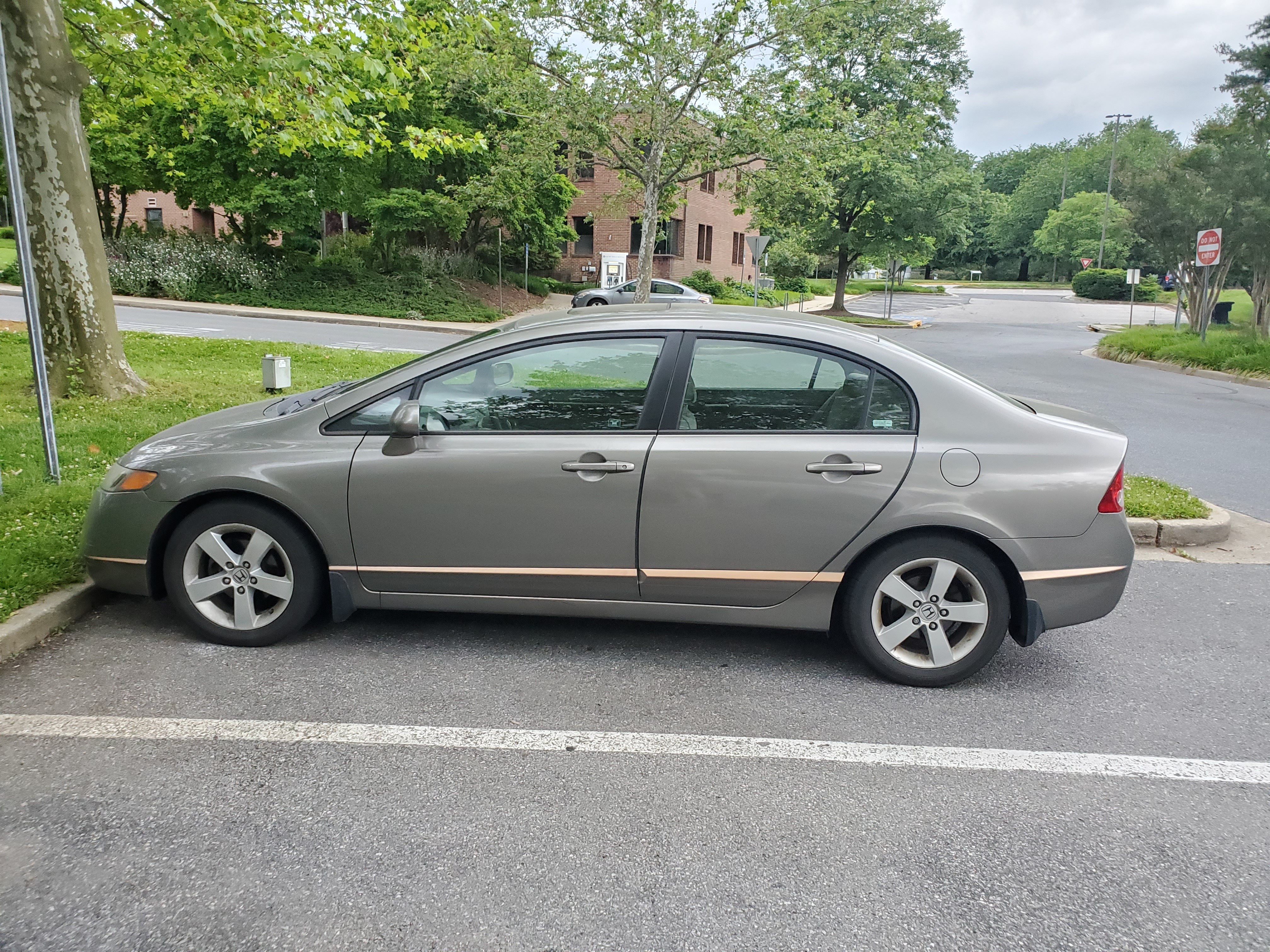

It is of course reasonable for any manufacturer in a competitive consumer market like the auto industry to want their product to stand out; uniqueness in styling and functionality can give consumers all the right messages, and can drive consumer appeal outside of technical specifications alone. This is particularly true in a market that is driven so strongly by constantly changing conceptions of style and fashion, as well as a pervasive presence in the public consciousness. It is hard to argue that cars are not part of consumer fashion, much like mass-market clothing styles. After all, nobody wants to be seen stepping out of an ugly car, unless they're doing a LeMons rally. But does the rational need for a consumer product to stand out from the rest explain the eighth generation Civic's somewhat revolutionary styling entirely? Perhaps not.
As much as car manufacturers try to gain brand recognition by their finest halo models, like the Acura NSX or Chevrolet Corvette, much of the brand awareness they gain is ultimately still decided by their mass-market products, and for obvious reasons: Far more people buy, or decide whether or not to buy, models like compact cars or midsize family crossovers, than do those who are shopping around for the perfect sports car or luxury SUV. Toyota's Camry and Corolla earned them a reputation for simple dependability, and the second-generation Prius, the first hybrid to enjoy a truly massive cultural reception, later associated Toyota with efficiency and environmental consciousness as well. On the other hand, GM's compacts of the 1990s and early 2000s made them seem safe and predictable, if out of touch and style, and the association of their plush Buick brand with the elderly didn't help. The public face of car companies is, whether they like or not, partially at the mercy of the consumers themselves. But this is a two-way dialog, as changing one's products can drive a change in the way that consumers treat the brand, so long as those products make a real impact. Consider how Tesla's Model S took them from relative obscurity as a specialty limited-production EV manufacturer to the de facto face of electric vehicles, or how AMC's early entry into the domestic compact market with the Rambler American (descended, of course, from the Nash model) earned them a lasting reputation as the sensible fourth option for American car buyers. This value-friendly image persisted through the 1960s, even onto their high-end models like the Javelin.
So now, considering that the brand image of car manufacturers informs and is informed by the presence of their mainstream models in the consumer environment, we begin to understand the true effect of the eighth generation Civic. Yes, the new generation brough fresh ideas in style, performance, and user experience to Honda's compact, but more than that, it dragged Honda's brand image into the 21st century by brute force. Honda was no longer the company that made your uncle's beat up old Civic, your mom's dowdy Accord. It was now impossible to ignore that the Civic was the sporty compact option, even outside of enthusiast circles, and by virtue of this, Honda's image was refreshed. Honda became innovative, and ready for the future.
So the immediate effects of the eighth generation Civic were relatively straightforward. A sporty, futuristic redesign of a classic model refreshes the company's image; this is pretty standard stuff. Consider the outsize popularity of the AMC Pacer, or the explosion of models like the Rambler Marlin and Plymouth Barracuda after the introduction of the Ford Mustang. What about longer-term effects? First off, rather unsurprisingly, the Civic's unique design aspects, like its swoopy, futuristic interior with two-tier instrument panel, or its sharp, edgy outside styling, were cascaded to models like the Accord and CR-V. The Civic led the way for a widespread refresh of Honda's product line, ushering in the new millennium of design for the manufacturer. A secondary effect, however, was one that Honda likely did not intend at all.
Look at basically every mid 2000s compact car. They are all, broadly speaking, fairly similar. They have somewhat shorter rear decks than their 1990s ancestors, and typically have more streamlined cabins and front ends, but they retain a similar stance, and similar interior design, to the models they replaced. At this time, the eighth generation Civic truly stood out, for reasons mentioned above, but particularly the steeply raked windshield with the base of the A-pillar far forward, and its high rear deck which blends into the rear window. Compare these designs to new compacts, starting from about 2010-2014; the second generation Chevrolet Cruze, the third-generation Ford Focus, the fifth generation Hyundai Elantra, the Dodge Dart. All of these have moved their A-pillars forward, shortened and raised the rear deck to meet the rear window higher up, adopted more rakishly sloped beltlines that adopt a more "sporty" stance. These are all relatively standard features of the modern compact, just as many midsize and full size sedans shifted to fastback/sportback configurations as the Tesla Model S so popularized. In the late 2000s, however, this silhouette, this modern form of the compact, was pretty much unheard of...except for the eigth generation Civic.
To be fair, it could be argued that this widespread design change was as much a product of crash safety and fuel economy constraints as it was a style decision, but this is not wholly supported by the range of compact car models. The Toyota Corolla did not really adopt this design scheme until its most recent generation, and the Volkswagen Jetta even now retains a relatively straightforward silhouette. There is of course no "right" way to style a car, or any piece of consumer goods, for that matter, but design preferences and trends of course strongly influence the style of new products. It is my conclusion that the eighth generation Honda Civic pioneered the shape of the modern compact car, that it not only dragged itself, and Honda, into the future, but it also did so for compact cars in general. The eighth generation Civic represented a stylistic break from the norm that not only surpassed the styles of the late 1990s and early 2000s, but actively rejected them, with its sleek lines inside and out, two-tier digital dash, and low-slung layout.
What is it like, though?
In the day to day, the user of a car of course cares little for the artistic significance of its styling, of course except for when she goes to a car meet. The interior of the 2006 Civic, while sleek and futuristic, ultimately differs little from the norm, with most controls being logically placed and easy to use. This is of course a natural result of the position that cars occupy both as consumer products and as expressions of style; interior design and UX design can only be so flexible, as the harder it is to get accustomed to a car, the less satisfied the user will be. That said, the audio and HVAC controls are all logically placed, and the driver's controls are also generally well laid out; with no multifunction display on the gauge cluster to deal with, the steering wheel need only be occupied with audio and cruise control buttons. The two-tier dash sounds odd in theory, but works well in practice, placing the coolant temperature, fuel level, and speedometer close to the driver's line of sight. This additionally enables the use of a smaller steering wheel, as less visual area is required for the lower instrument panel. While having the tachometer and speedometer in different locations takes some getting used to, the scheme functions as well as any other. While the steering wheel and gauge cluster hold up today, the seat quality is dated. Tbe cabin has cloth seats all around, and for quick jaunts or a 45 minute commute they acquit themselves well, but spirited driving and long trips both make it apparent that these are not only economy car seats, but are definitely old economy car seats. They are very firm, and the bolstering, while present, is too shallow and far apart to help the driver much in hard corners.
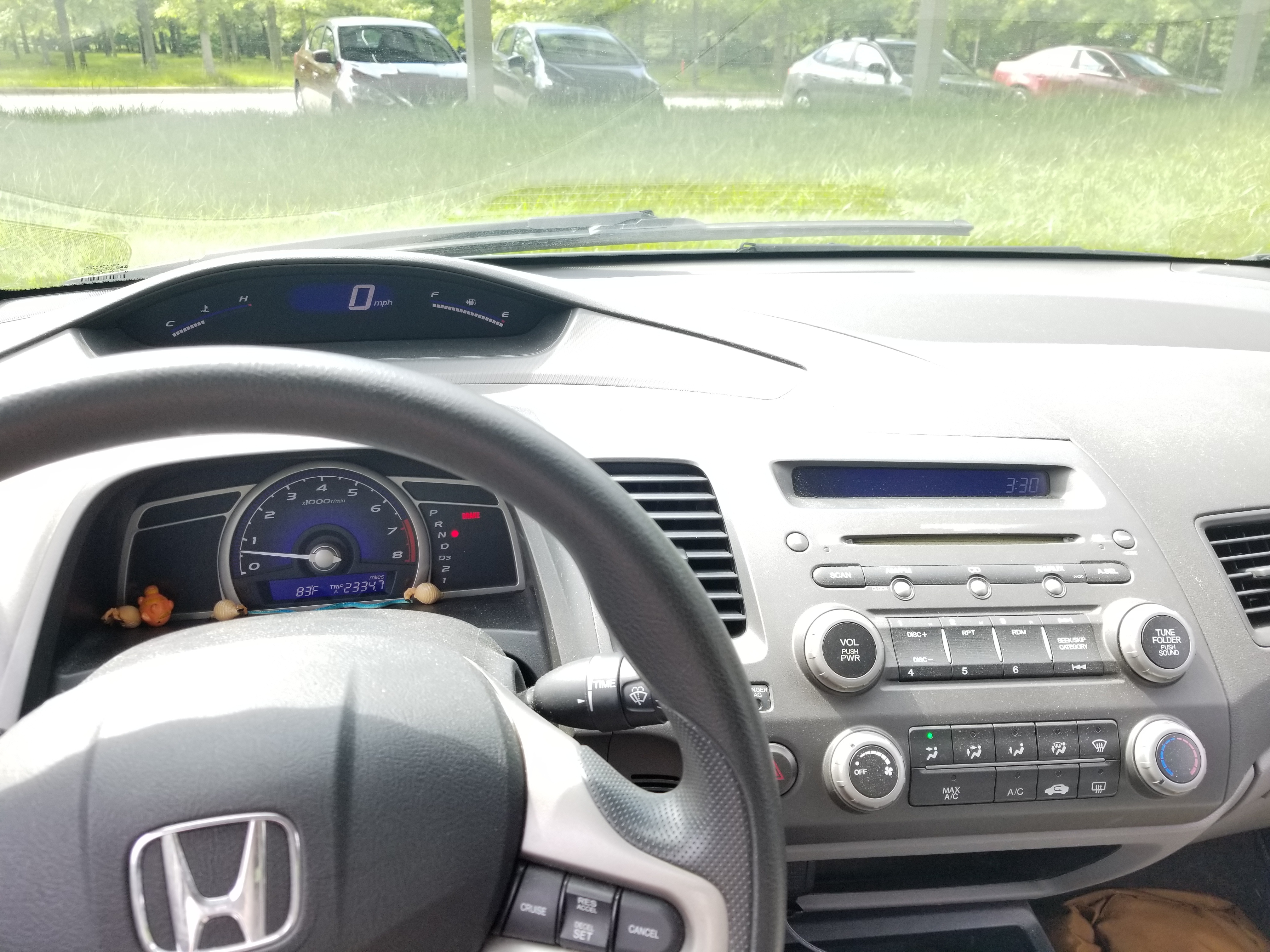
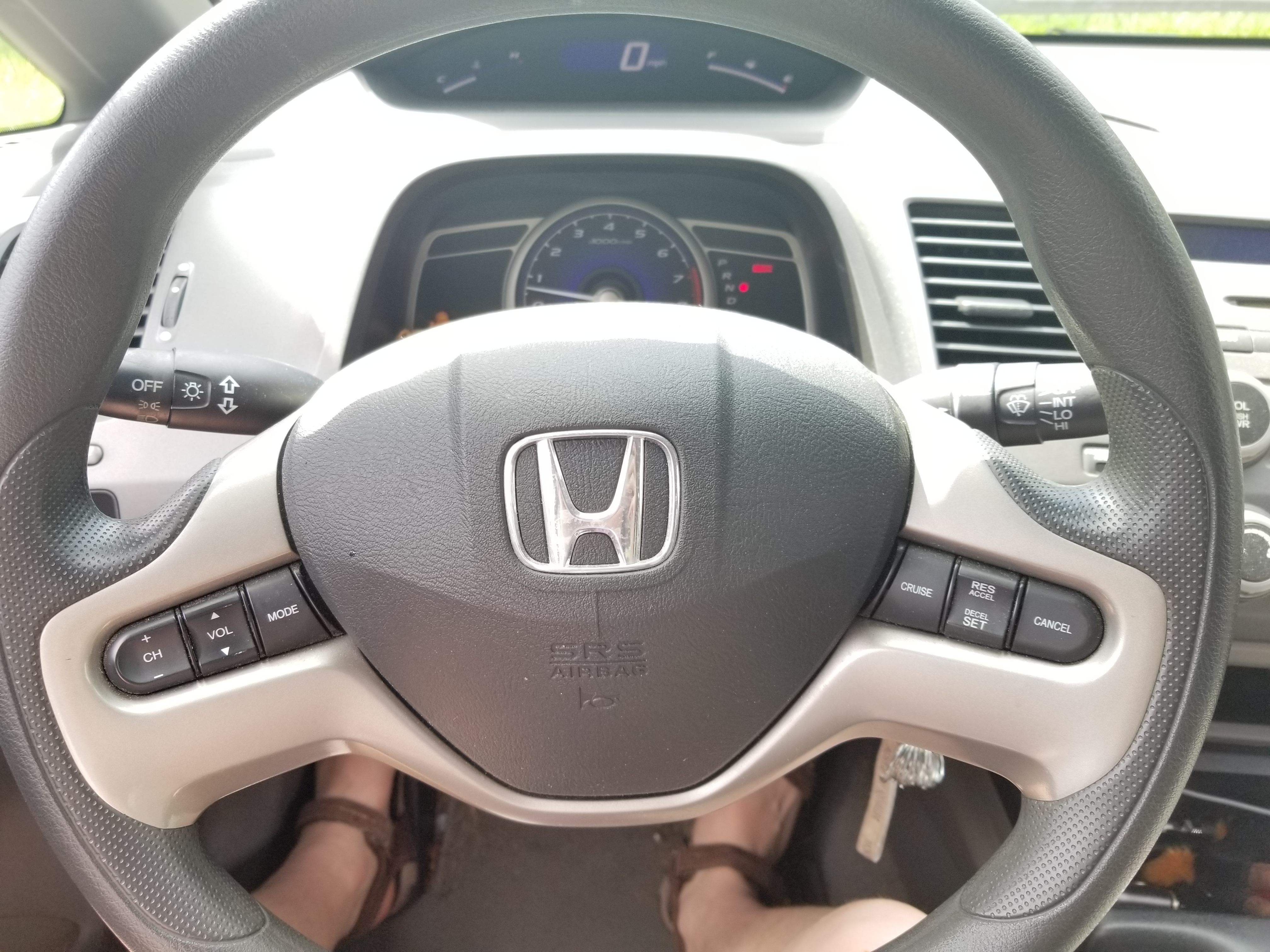

In the day, reviewers praised the comfort of the cabin, but it is neither particularly quiet or comfortable, especially by today's standards. It was certainly acceptable then, and may even have been quite good, but it is still clearly an economy car cabin. There are no pretentions of higher class in the cabin like a new Nissan Altima has. The Civic's ride quality also belies its age; while comfortable on smooth roads, it does not handle bumps well, and together with the car's relatively light weight, going over any kind of bump in a turn will cause the car to drift outwards. The suspension tuning is perhaps vaguely sporty, as it is very communicative for the driver as to the road surface and traction conditions, but the shock absorbers could definitely do better. In its time, the somewhat unpolished nature of the ride was entirely normal, and the way in which the driver feels in touch with the road, not only through the stiff steering, but also through the suspension, could certainly be considered sporty. Suspension technology and NVH/ride tuning have of course advanced by leaps and bounds in the 14 years since this car was made, so it would be unfair to cast the Civic's ride as unilaterally bad, but it has drawbacks that were certainly noticeable even then. Overall, it can be said that the Civic's ride is that of an older economy car; rough around the edges, yet entirely acceptable on good roads. At highway speeds, that roughness gets a little more apparent; the car begins to feel uncertain and twitchy, and driver effort increases markedly above about 75 mph.
The Civic's suspension comes into its own on twisty roads, however. Turn in feels positive, and body roll is very controlled, even with the EX's softer suspension tuning than the Si trim. As mentioned previously, the suspension is very communicative, and the driver feels in touch with the road at all times, for better or for worse. The steering, even with hydraulic assistance, feels heavy at basically all speeds, which becomes a strong plus above about 30 mph, as the steering feel is such that fast cornering and cruising at speed aren't muted by overactive power assist. Cornering is fun in the Civic, especially between about 20 and 45 mph, where one can stay in 2nd and 3rd gear and keep the power on. Handling is of course tuned for understeer in most circumstances, and the onset of this is predictable and very manageable, and the all-independent suspension, trademark of the Civic, means that the car shifts its weight confidently even when losing traction. The only exception to this is a surprising lift-off oversteer tendency in wet weather. With no traction control to prevent this, the driver must instead rely on brakes alone. In the case of the Civic, the brakes are responsive, with a firm pedal feel and linear, predictable braking effort, unlike many new cars.
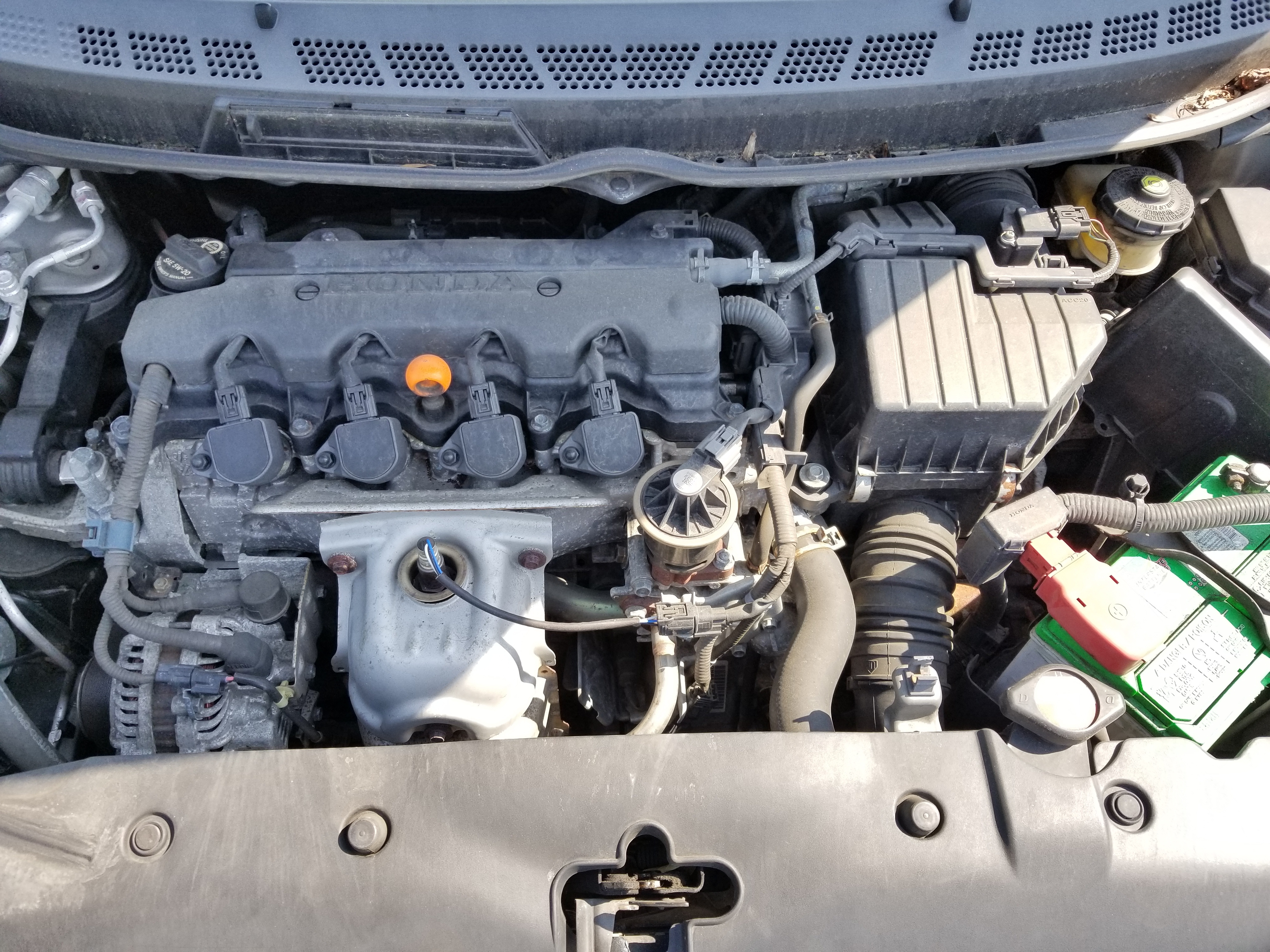
The 2006 Civic uses a new engine, the SOHC R18A1 unit, which displaces 1.8L and delivers a maximum of 140 horsepower and 128 lb-ft of torque. This is coupled to a five-speed automatic (in a time when most transverse automatics were four speeds), which performs adequately for normal use. With 140 hp, the Civic is not outstandingly quick, but the engine performs well for nearly all driving situations, and keeping it higher in the rev range makes the most of its power. The transmission feels temperamental at best, hunting for gears during light to moderate acceleration, up hills, and when trying to pass on highways. In street driving, its shift programming feels like an unhappy medium between sporty and thrifty, and always seems to shift either too soon or too late. However, its behavior is predictable, and using the 1/2/D3 shifter functions allows the driver to manually lock out some of this behavior, as well as manually kick down for cornering and passing. Shift quality is generally good, though the transmission somestimes engages gears roughly at low speed. This drivetrain combination, as well as the Civic's slick exterior, nets an EPA rated 30 mpg combined (fueleconomy.gov), which is quite good for the time and is still very reasonable today. Overall, the Civic's drivetrain, while not particularly outstanding, is well-refined for the time, including in terms of noise and vibration, and when used properly, can achieve both pleasing, if not exciting, performance and competent fuel economy.
All told, the eighth generation Civic presents an engaging driving experience, with light, "toss-able" handling and a capable drivetrain. The steering and braking are firm and respond predictably, and none of the driver's user interface feels overly electronically governed. On the other hand, the Civic feels rougher, harder, less composed than both high-value cars of its era and most new models. In its time, however, back when mechanical throttle linkages were still put on new cars and before traction control was standard, it was a sportier, more confident alternative to many mainstream compacts like the Chevrolet Cavalier.

So, from a consumer standpoint, what was the eighth generation Civic meant to be? It boasted a wide range of trim levels and options, from the hybrid sedan to the Si coupe, and could even come with features like satnav and satellite radio. The Civic Si of course has a relatively straightforward purpose; it is a budget-friendly, yet capable sport compact, as it has always been. The regular Civic, however, seems to linger in the same sort of curious "sporty economy car" niche as the Mazda3. Between its driver user experience, styling, and interior space, I believe the Civic is meant to be an economy car for buyers who on some level legitimately care about driving. The Civic is just slightly too much fun, slightly too capable, to just be mass-market wheels with a fuel-sipping engine. The Civic is best suited for a driver who views its sensitive ride and heavy steering as features, not as drawbacks. This is of course by no means to say that the Civic is inherently an enthusiast car; at its core it is simply an economy car, and any enthusiast it appeals to on its own merits is an enthusiast who happens to view economy cars in a favorable light. That said, the Civic presents itself with less apathy towards the driving experience and towards the driver themself than many cars do, and fundamentally it feels like it was designed by people who care about driving. The only weak spot in this analysis is the Civic's transmission; while I hear that Honda manual gearboxes are quite good, this automatic feels unfinished, with varying shift quality and questionable shift decisions. While advanced for its time, with five speeds, it makes the Civic feel slightly less confident and put together. True enthusiasts, if buying an eighth generation Civic, would be advised to avoid the automatic if at all possible. That said, for normal drivers, for whom perfect transmission performance is not an issue, the automatic is more than good enough, and according to the EPA, nets one mpg better than the manual, and is almost certainly far better in stop and go traffic.
The eighth generation Civic, in conclusion, is sort of a tacid realization of that myth about small cars being inherently fun, about how a compact car with the right modifications, driven the right way, could be more fun than an expensive sports car. Does this myth really hold up on critical examination? Perhaps not. However, the Civic succeeds at having a sort of enthusiatic willingness tied into its very nature. Driving it hard feels less like you are verging outside of the engineers' comfort zone and more like you are taking proper advantage of the car at your hands. At its limits of performance, the Civic is still entertaining, and still feels safe and manageable. With the right modifications, the Civic can absolutely hang with far more expensive cars on the track or the autocross circuit, but with nothing but regular oil changes, it can be a reliable commuter as well. If the Civic doesn't have something for everyone, it at least comes pretty close.